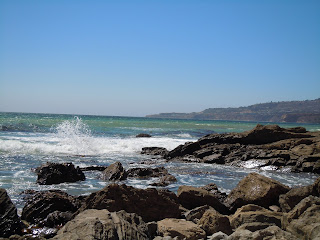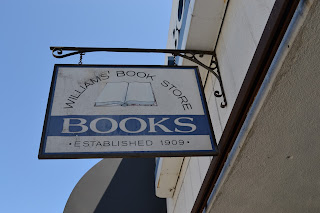I've been away. At the end of every summer, in the days between the last day of summer school and the start of the fall semester, I get to go away. To my best friend Mary's house. We've been friends for thirty years now, because a guy I was dating kept telling me, "You really remind me of someone. You really need to meet this person."
Although nagging your new girlfriend about how much she needs to meet your old girlfriend may not be everyone's idea of ideal dating strategy, I did go to meet her. We have been best friends ever since. We always know what the other one is thinking; finish each other's sentences with about 98% accuracy; and agree that a great friendship is one in which you might not talk for many weeks at a stretch but when you do, it's as if the conversation has never been interrupted. I bought my first house in Austin because the street name was the same as the street on which Mary lives, where she has lived most of her life.
Lots of people find it hard to believe that anyone can love San Pedro. Santa Barbara, San Francisco, San Diego, Carmel - lots of people love lots of places in California, but not that many people love San Pedro. It's the Port of Los Angeles, the end of the Harbor Freeway, hotbed of shipping, plagued by poverty and crime, appreciated mostly as a place where you catch a boat to go someplace else.
In a 1940's film noir, or a Perry Mason episode, San Pedro would be where you'd find the shady stool pigeon in a stained fedora. Or the dead body. Or both.
When I first visited San Pedro back in 1983, the waterfront areas were rough indeed. No problem summoning up images of sailors on leave looking for trouble to get into, or longshoremen looking for work. You certainly didn't venture down "below Gaffey," or heavens forbid "below Pacific" at night.
All I saw was a San Francisco in the rough.
Since then a great deal of gentrification has taken place, San Pedro being a location where southern California home prices are relatively reachable. Not reachable, relatively reachable. The waterfront area has turned itself inside out to attract visitors, without a great deal of success. This is sad in a way, but it leaves Mary and me with some very pleasant bike rides along the wharves where fishing boats occupy the berths they've held for decades.
And through the marina where luxurious yachts await their busy owners, and many slips await more boats.
When I was a child we had a cottage in a small Connecticut town on Long Island Sound, so many of my spring and summer memories are associated with salt water, old houses, and somnolent "downtowns." I was just looking on that Facebook place where people reminisce about their hometowns, and saw how people still have to explain little Westbrook as "right next to Old Saybrook."
Maybe that's why I understood San Pedro right away, and felt sufficiently at home there to take on Mary's house as if it had been my own. (During the first summer we visited, my daughter and I took up all the wall-to-wall carpeting one day while Mary was at work. Another year, I painted the inside of her house and did the trim in unmistakably '80's colors. I could go on.)
San Pedro also has retail areas that look like the 1950's are still alive and well. Mary remembers these stores from childhood, and the merchants up here know her, too.
San Pedro's main retail center is not up here on Weymouth, but is down there "below Gaffey." It was where you went for school shoes, Scout uniforms, books, fabric, and art supplies. Remember the unmistakable smell of an old department store, with its creaky wooden floors and hosiery presented to you in a flat box the saleslady drew from beneath the glass display case?
Unlike my home towns of Hartford and Austin, San Pedro has preserved many of their vintage buildings with their characteristic mid-century entryways - like these zig-zag display windows:
Rather than make ourselves sad about a way of life that hardly exists any more, Mary and I spend most of our time paying attention to the things that won't change a whole lot in our lifetimes. There are many trails between San Pedro and Palos Verdes, and we have walked many of them in our time.
Oops, just as I was talking about things that won't change much in our lifetimes, here's a piece of road that, um, fell off last year:
 |
| Not Here Any More |
Sometimes Mary and I drive to one of the fancy golf resorts on the peninsula, park her '92 Civic in one of the six free spots they so generously provide for hoi polloi, and hike down to sit near the rich folks' Pacific.
Once you bring your damp treasures home, you can't really tell whether they came from the rich peoples' beach or the beach that belongs to all of us. Treasures accumulate on the sunroom table.
Long ago, back in the spring of 1983, I spent a few days at Mary's house getting to know this former girlfriend of the guy I was seeing. At the end of the visit I cried, unable to believe I had to leave. When the relationship with the guy came to a tumultuous end, Mary said, "This is my fault. I should have killed him that time with the wooden recipe box." Our friendship survives and thrives, and San Pedro still feels like home to me. I don't know why it hasn't caught on like the swishy seaside communities nearby, but I love it in all its shabby, struggling glory.





























No comments:
Post a Comment